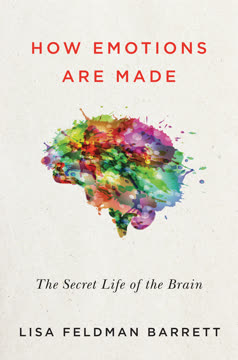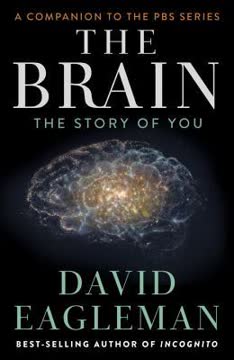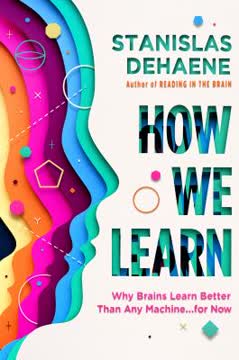Key Takeaways
1. Neuroplasticity: The brain's remarkable ability to rewire itself
The brain is not too sophisticated for its own good after all.
Paradigm shift. The discovery of neuroplasticity has revolutionized our understanding of the brain. For centuries, scientists believed the brain was fixed and unchangeable after childhood. However, research has shown that the brain can form new neural connections throughout life, allowing it to adapt, learn, and heal.
Practical implications. This breakthrough has profound implications for treating various neurological conditions, from stroke to chronic pain. By harnessing the brain's plasticity, patients can potentially recover lost functions and improve their quality of life. Neuroplasticity-based treatments often involve repetitive exercises, mental practice, and sensory stimulation to encourage the formation of new neural pathways.
Challenges and opportunities. While neuroplasticity offers hope, it also presents challenges. The brain's ability to change cuts both ways – negative experiences can reinforce harmful patterns. However, by understanding and leveraging neuroplasticity, we can develop more effective treatments for a wide range of brain-related issues.
2. Chronic pain can be unlearned through mental visualization
I still believe in miracles, and that nothing is impossible.
Mind over matter. Dr. Michael Moskowitz's groundbreaking work demonstrates that chronic pain can be alleviated through mental visualization techniques. By consciously redirecting the brain's focus, patients can weaken pain circuits and strengthen alternative neural pathways.
Competitive plasticity. Moskowitz's approach is based on the principle of competitive plasticity – the idea that different brain functions compete for neural real estate. By engaging in visualization exercises, patients can "take back" brain areas that have been hijacked by pain processing.
Practical application. The technique involves:
- Visualizing brain areas associated with pain
- Imagining these areas shrinking or becoming less active
- Consistently practicing this visualization, especially when pain occurs
- Gradually weakening pain circuits and strengthening alternative pathways
This method has helped many patients reduce or eliminate chronic pain, often allowing them to reduce or discontinue pain medications.
3. Exercise and movement can reverse Parkinson's symptoms
Use it or lose it.
Defying expectations. John Pepper's story challenges conventional wisdom about Parkinson's disease. Through a rigorous walking regimen and conscious movement techniques, he was able to regain control over his motor symptoms and dramatically improve his quality of life.
Neuroplastic benefits of exercise. Research has shown that exercise, particularly intensive and regular physical activity, can:
- Increase the production of neurotrophic factors (e.g., BDNF, GDNF)
- Promote the growth of new neurons and synapses
- Improve overall brain function and resilience
Conscious movement. Pepper's approach combines physical exercise with intense mental focus on movement. This conscious control helps bypass damaged automatic movement circuits and create new neural pathways for motor control.
4. Stages of neuroplastic healing: From cellular repair to learning
The mind programs the functioning of the brain.
Holistic process. Neuroplastic healing involves several stages, each building on the previous one:
- Cellular repair: Addressing general cellular functions of neurons and glia
- Neurostimulation: Activating dormant circuits through various forms of energy
- Neuromodulation: Restoring balance between excitation and inhibition
- Neurorelaxation: Allowing the brain to accumulate energy for recovery
- Neurodifferentiation and learning: Making fine distinctions and forming new connections
Tailored approaches. Different neurological conditions may require emphasis on different stages. For example, traumatic brain injury might need more focus on cellular repair and neurostimulation, while learning disorders might benefit more from neurodifferentiation exercises.
Continuous process. Neuroplastic healing is not a one-time event but an ongoing process. Patients often need to maintain their practices to sustain and build upon their improvements.
5. Light therapy: A revolutionary approach to brain healing
Life is short, and Art long; opportunity fleeting, experience misleading, and decision difficult.
Rediscovering ancient wisdom. Light therapy, long used in traditional medicine, is gaining recognition in modern neuroscience. Low-intensity lasers and LED lights can stimulate cellular repair and promote neuroplastic changes in the brain.
Cellular mechanisms. Light therapy works by:
- Stimulating mitochondria to produce more ATP (cellular energy)
- Increasing blood flow and oxygenation in brain tissue
- Reducing inflammation and oxidative stress
- Promoting the production of growth factors and new neurons
Wide-ranging applications. Light therapy has shown promise in treating various conditions:
- Traumatic brain injury
- Stroke recovery
- Neurodegenerative diseases (e.g., Alzheimer's, Parkinson's)
- Depression and other mood disorders
- Visual impairments
While more research is needed, light therapy offers a non-invasive and potentially powerful tool for brain healing.
6. The Feldenkrais Method: Healing through movement awareness
If I raise an iron bar I shall not feel the difference if a fly either lights on it or leaves it. If, on the other hand I am holding a feather, I shall feel a distinct difference if the fly were to settle on it.
Mind-body integration. The Feldenkrais Method, developed by Moshe Feldenkrais, focuses on improving body awareness and movement to promote healing and functional improvement. It emphasizes the inseparable connection between mind and body.
Key principles:
- Slow, gentle movements to increase sensory awareness
- Attention to subtle differences in movement
- Exploration of non-habitual movement patterns
- Reduction of unnecessary effort and tension
Neuroplastic effects. By increasing body awareness and exploring new movement patterns, the Feldenkrais Method can:
- Strengthen neural connections related to movement and body perception
- Improve overall motor control and coordination
- Alleviate pain and tension
- Enhance cognitive function and emotional well-being
The method has been successfully applied to various conditions, from chronic pain to neurological disorders.
7. Tongue stimulation: A gateway to brain rehabilitation
The tongue is a royal road to activating the entire human brain.
Unexpected pathway. The Portable Neuromodulation Stimulator (PoNS) device, developed by researchers at the University of Wisconsin-Madison, uses electrical stimulation of the tongue to promote neuroplastic changes in the brain.
Neurological basis. The tongue's dense nerve connections to the brain stem make it an ideal conduit for stimulating widespread brain activity. Stimulating the tongue can:
- Activate multiple brain regions simultaneously
- Promote neuromodulation and balance in brain activity
- Facilitate neuroplastic changes in damaged or dysfunctional areas
Diverse applications. The PoNS device has shown promise in treating:
- Balance disorders
- Traumatic brain injury
- Multiple sclerosis
- Stroke recovery
- Parkinson's disease
By combining tongue stimulation with targeted exercises, patients can potentially recover lost functions and improve their overall neurological health.
8. Traumatic brain injury: Recovery through neuroplastic techniques
Errors cannot be avoided.
Challenging conventional wisdom. Traditional views often considered traumatic brain injury (TBI) to have limited recovery potential. However, neuroplastic approaches have demonstrated that significant improvements are possible, even years after the initial injury.
Multifaceted approach. Effective TBI recovery often involves:
- Targeted exercises to reconnect and strengthen neural pathways
- Sensory stimulation techniques (e.g., light therapy, tongue stimulation)
- Cognitive training to rebuild lost skills
- Mindfulness and relaxation practices to manage stress and promote healing
Case studies. Patients like Jeri Lake and Kathy Nicol-Smith have shown remarkable recoveries from TBI using neuroplastic techniques, regaining functions they were told were permanently lost.
9. The power of conscious control in overcoming neurological disorders
I believe that the unity of mind and body is an objective reality.
Harnessing awareness. Conscious control of movement and bodily functions can be a powerful tool in overcoming neurological disorders. By focusing intense attention on specific actions or sensations, patients can often bypass damaged neural circuits and create new pathways.
Applications:
- Parkinson's disease: Conscious walking techniques to improve gait and balance
- Chronic pain: Mental visualization to reduce pain perception
- Stroke recovery: Focused attention on affected limbs to regain motor control
- Visual impairments: Conscious eye movements to improve vision
Neural basis. Conscious control activates different brain areas than automatic processes, allowing patients to recruit undamaged regions to compensate for impaired functions. With practice, these new pathways can become more automatic, leading to lasting improvements.
Last updated:
FAQ
What's The Brain's Way of Healing about?
- Neuroplasticity Focus: The book delves into neuroplasticity, the brain's ability to reorganize itself by forming new neural connections. This adaptability is crucial for healing from injuries and disorders.
- Innovative Healing Methods: Norman Doidge explores unconventional therapies like light, sound, and movement to stimulate brain function and recovery, showcasing their potential to awaken dormant neural circuits.
- Real-Life Transformations: Through compelling case studies, the book illustrates how individuals have achieved remarkable recoveries from conditions like Parkinson's disease, chronic pain, and traumatic brain injuries.
Why should I read The Brain's Way of Healing?
- Empowering Insights: The book offers a deeper understanding of the brain's healing capabilities, challenging the notion that certain neurological conditions are irreversible.
- Practical Applications: Readers gain access to practical advice and techniques that can enhance brain health and recovery, emphasizing active participation in the healing journey.
- Inspiring Stories: The personal accounts of recovery provide motivation and hope, demonstrating the potential for significant improvement in brain-related conditions.
What are the key takeaways of The Brain's Way of Healing?
- Neuroplasticity is Real: The brain's ability to change and adapt is central to recovery, allowing for the reorganization of neural connections throughout life.
- Energy-Based Healing: Techniques involving light, sound, and movement can stimulate brain function, reawaken dormant circuits, and improve overall brain health.
- Active Participation: Healing requires active engagement from patients, including mental exercises and physical activity, to play a significant role in their recovery process.
How does neuroplasticity work according to The Brain's Way of Healing?
- Dynamic Brain Connections: Neuroplasticity allows neurons to form new connections in response to learning and experience, essential for recovery and skill development.
- Use-It-or-Lose-It Principle: Neurons that are not regularly activated can weaken and die, highlighting the importance of engaging in mental and physical activities.
- Competitive Plasticity: Strengthening certain neural pathways can weaken others, a principle applied in therapeutic techniques to promote healing.
What are some specific methods discussed in The Brain's Way of Healing?
- Light Therapy: Utilizes low-intensity lasers and LED lights to penetrate the skull, promoting cellular repair and regeneration in the brain.
- Conscious Movement: Techniques like John Pepper’s focus on conscious control over movement to manage symptoms of Parkinson’s and improve motor functions.
- Visualization Techniques: Michael Moskowitz’s approach uses visualization to activate different brain circuits, helping patients manage chronic pain.
What is the Feldenkrais Method mentioned in The Brain's Way of Healing?
- Mind-Body Connection: Focuses on the connection between movement and awareness, teaching individuals to become more aware of their body and movements.
- Awareness Through Movement: Involves gentle, mindful exercises to help rewire the brain, improving coordination and balance.
- Functional Integration: Practitioners use gentle touch to guide movements, helping individuals discover new ways of moving and functioning.
How do low-intensity lasers aid in healing according to The Brain's Way of Healing?
- Targeting Damaged Cells: Lasers preferentially affect damaged cells, reducing inflammation and stimulating cellular repair processes.
- Enhancing Cellular Energy: They increase ATP production, providing cells with the energy needed for repair and regeneration.
- Influencing Brain Chemistry: Laser therapy can affect neurotransmitter release, improving mood and reducing pain, aiding overall recovery.
What is the Tomatis Method mentioned in The Brain's Way of Healing?
- Sound Therapy Technique: Uses filtered music and the mother’s voice to stimulate the brain and improve listening skills, enhancing communication and cognitive function.
- Three Phases of Treatment: Includes a passive phase with modified music, followed by an active phase with vocal exercises, solidifying auditory processing gains.
- Neuroplastic Benefits: Based on the principle that "neurons that fire together wire together," promoting lasting changes in auditory processing.
How does sound therapy improve conditions like autism and ADHD?
- Enhances Auditory Processing: Improves the ability to process auditory information, leading to better communication and social engagement.
- Regulates Emotions: Helps regulate emotions and reduce anxiety, facilitating easier interaction with others.
- Promotes Neuroplasticity: Encourages neuroplastic changes through auditory stimulation, improving cognitive and behavioral outcomes.
What role does exercise play in neuroplastic healing as described in The Brain's Way of Healing?
- Promotes Brain Health: Stimulates the production of growth factors that support neuron health and connectivity, enhancing cognitive function.
- Improves Motor Function: Helps retrain the brain to improve coordination and balance, particularly in movement disorders like Parkinson’s.
- Combats Learned Nonuse: Prevents learned nonuse by encouraging regular exercise, maintaining and improving motor skills.
What are the implications of The Brain's Way of Healing for traditional medicine?
- Rethinking Treatment Approaches: Challenges conventional practices that rely on medication and surgery, advocating for neuroplasticity-based therapies.
- Holistic Healing Perspective: Promotes a mind-body connection, encouraging active patient participation in recovery.
- Potential for Broader Applications: Suggests that neuroplasticity principles could be applied to a wide range of neurological and psychiatric conditions.
What are the best quotes from The Brain's Way of Healing and what do they mean?
- “The brain’s sophistication provides a way for it to repair itself.”: Highlights the brain's inherent ability to heal and adapt, challenging the view that brain injuries are permanent.
- “Pain is not punishment for punishment’s sake.”: Emphasizes that pain serves a biological purpose, helping patients manage it more effectively.
- “Healing is not just about curing; it’s about making whole.”: Reflects the holistic approach to healing, suggesting true recovery involves restoring balance and function.
Review Summary
The Brain's Way of Healing explores neuroplasticity and brain healing through case studies and scientific research. Readers found the book fascinating, with many praising its insights into treating conditions like chronic pain, Parkinson's, and brain injuries. Some critics felt it relied too heavily on anecdotes and pseudoscience. The writing style was generally engaging, though occasionally long-winded. Many readers appreciated the book's message of hope for those with neurological conditions, while others cautioned against overstating potential benefits. Overall, most found it an enlightening read on cutting-edge neuroscience.
Similar Books






Download PDF
Download EPUB
.epub digital book format is ideal for reading ebooks on phones, tablets, and e-readers.





